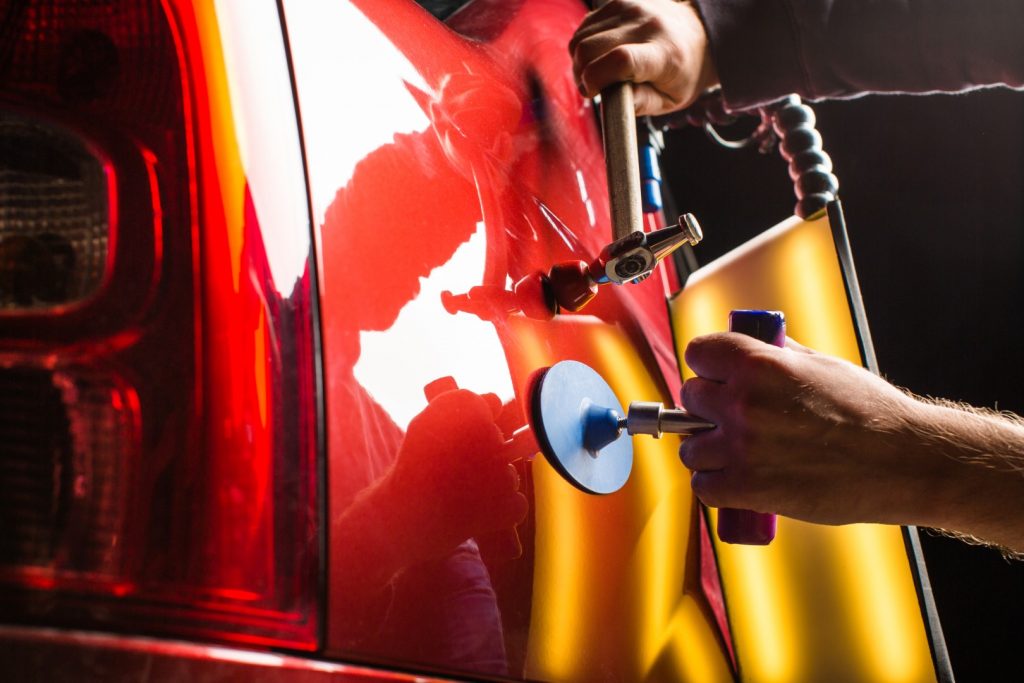
Getting a dent in your car repaired can be a long, arduous process that involves removing the dented metal, replacing it, prepping it for paint, and painting it. However, paintless dent repair (PDR) can significantly speed up the repair process because it is non-invasive and as the name suggests, it requires no paint. While PDR is usually more cost-effective than traditional body repair, the cost of your repair depends on a variety of factors.
Extent of Damage
As you can probably imagine, the extent of the damage to your car has a major impact on how much the repair will cost. A single dent in a door panel is going to be less expensive than hail damage that covers the hood, roof, doors, and trunk. Your cost will be based on the number of dents on any single panel and the number of panels that have dents.
Dent Size
The bigger the dent in your car, the more you’ll pay for PDR. This is because the amount of work and resources required to remove the dent will be more for larger dents. The PDR industry typically categorizes dent sizes in reference to U.S. coin sizes. For example, you might have dime-sized dents from a hail storm or a half-dollar-sized dent from pumping into a light pole. These sizes are used to provide cost estimates and to help customers understand the extent of the damage to their car. Additionally, the depth of the dent will influence price as well, since it will take more effort and time to pull a deep dent out.
Dent Location
There are some dent locations that are difficult to reach or more challenging to repair than others. For instance, if the area behind the dent can be accessed, technicians can often pop the dent back out using a specific process and special tools. If the area behind the dent is inaccessible, other techniques have to be employed to pull the dent slowly out so that it regains its former shape. Typically, these dents are going to cost more to repair because they require more time and effort to fix than those that can be popped out from behind.
Creasing
In many cases, creased dents can’t be repaired through PDR and have to go through the traditional repair process to fully fix. However, under certain circumstances, creased dents can be repaired through PDR. Creased dents are extremely complicated and require additional care from highly specialized technicians to fix without replacing the panel. Due to their complexity, you can expect to pay more for a repair to a creased dent than you will for one that is round and smooth. Moreover, some PDR shops won’t even touch creased dents because there is an increased chance that the paint will chip or crack when the dent is pulled out. At that point, traditional body repair becomes the only option to fully fix the dent.
Conclusion
PDR can save you a lot of money in body repair fees, but the cost to get your dents fixed through PDR varies based on the type, number, location, and size of your dents. The best way to know how much your PDR will cost is to bring your car to a PDR shop and have the trained technicians give you an estimate.
